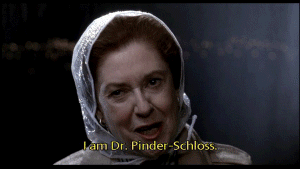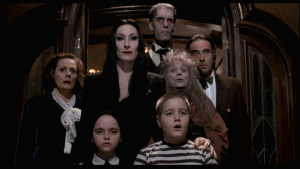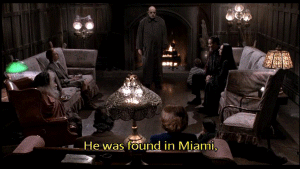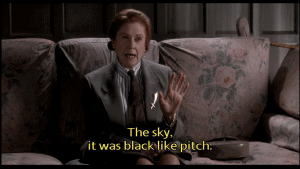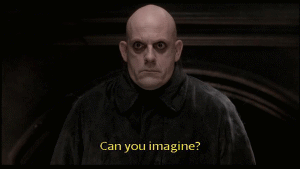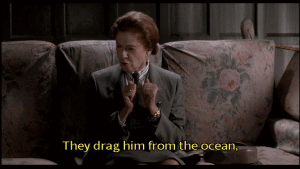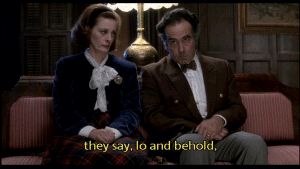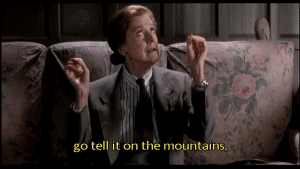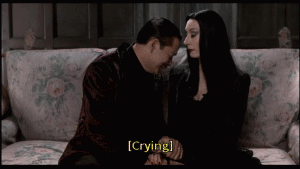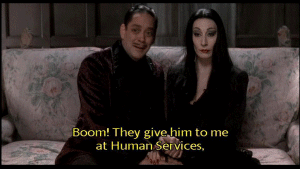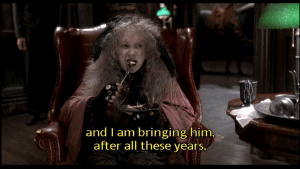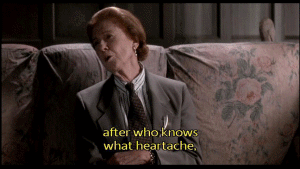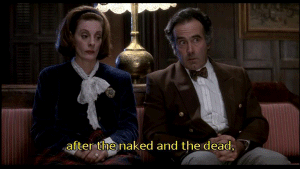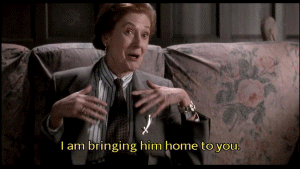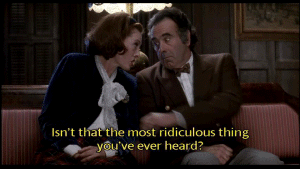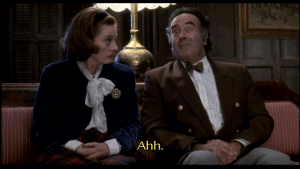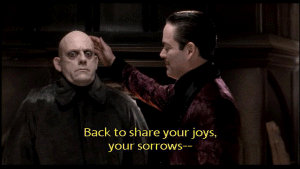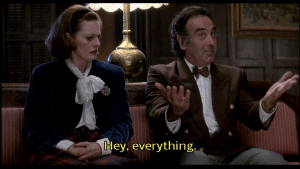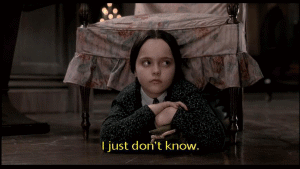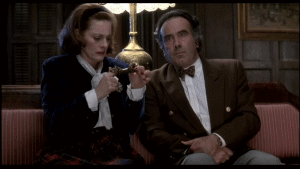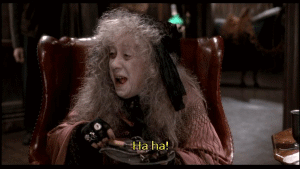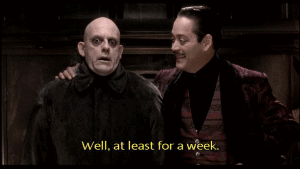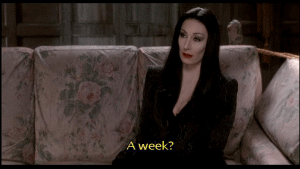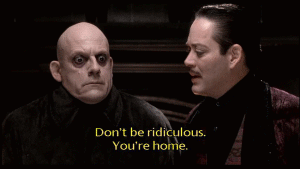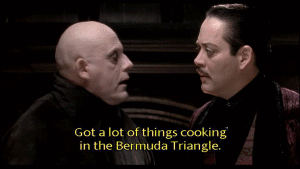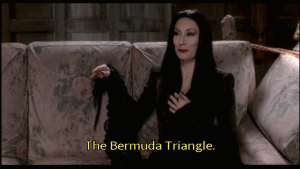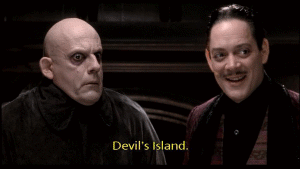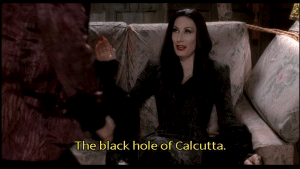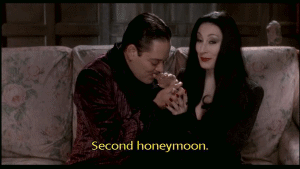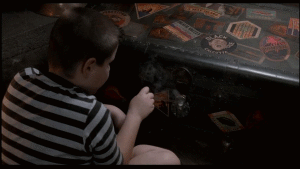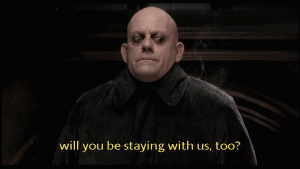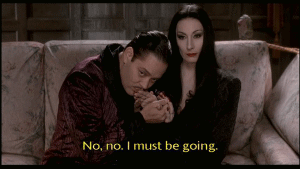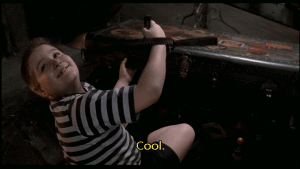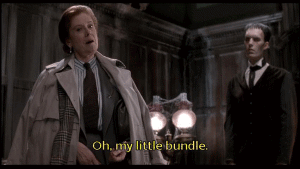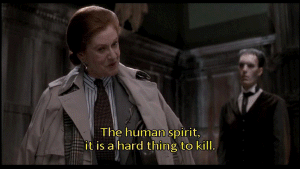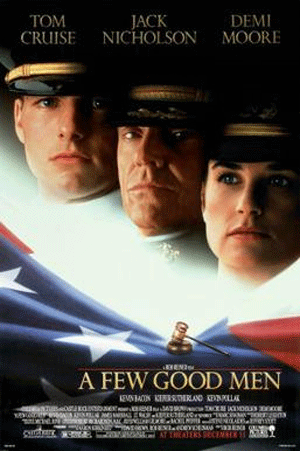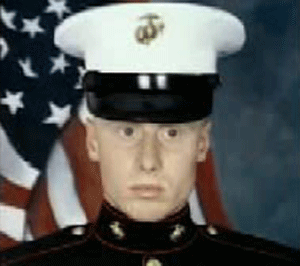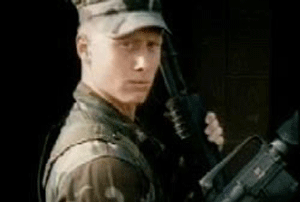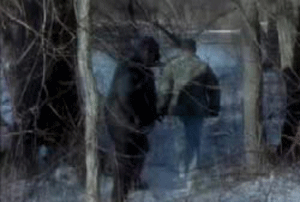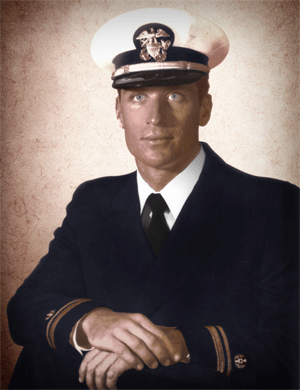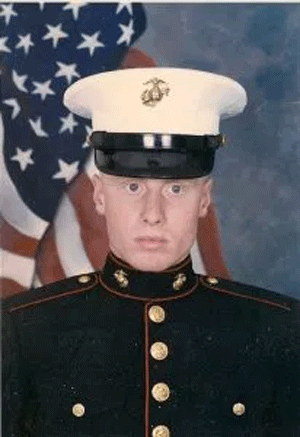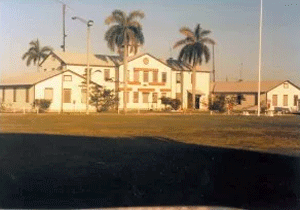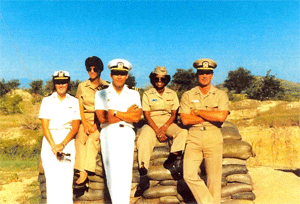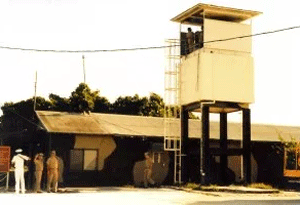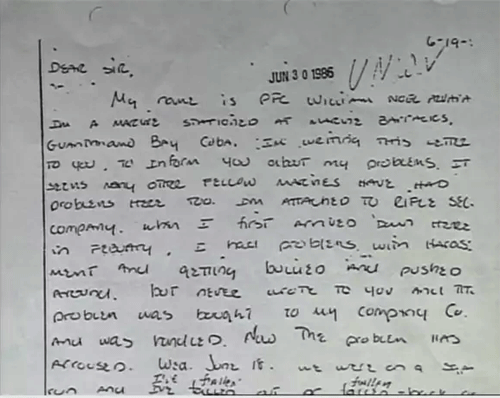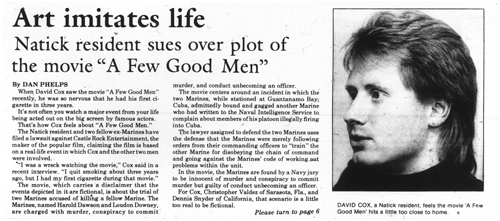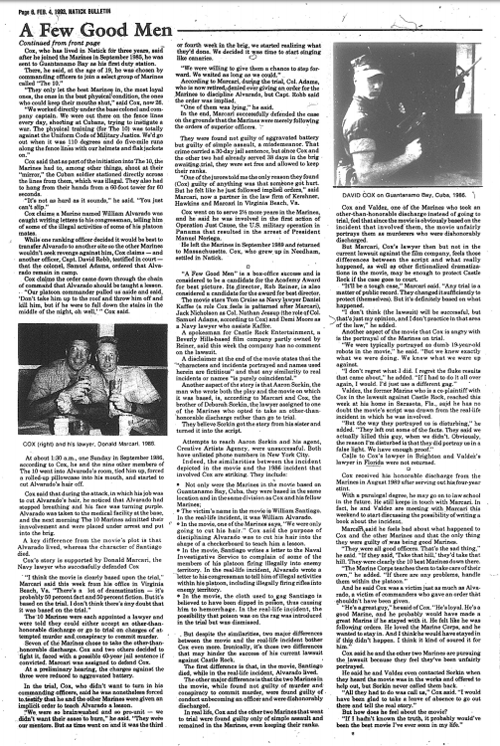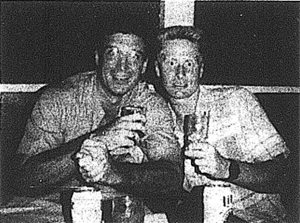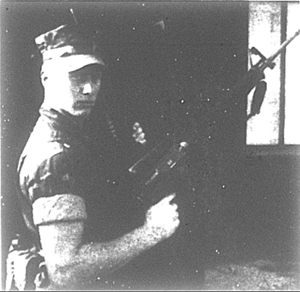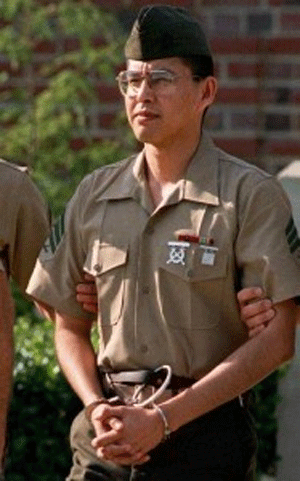John A. Paisley
Widows [EXCERPT]
by William R. Corson, Susan B. Trento, and Joseph J. Trento
© 1989 by William R. Corson, Susan B. Trento, and Joseph J. Trento
NOTICE: THIS WORK MAY BE PROTECTED BY COPYRIGHT
YOU ARE REQUIRED TO READ THE COPYRIGHT NOTICE AT THIS LINK BEFORE YOU READ THE FOLLOWING WORK, THAT IS AVAILABLE SOLELY FOR PRIVATE STUDY, SCHOLARSHIP OR RESEARCH PURSUANT TO 17 U.S.C. SECTION 107 AND 108. IN THE EVENT THAT THE LIBRARY DETERMINES THAT UNLAWFUL COPYING OF THIS WORK HAS OCCURRED, THE LIBRARY HAS THE RIGHT TO BLOCK THE I.P. ADDRESS AT WHICH THE UNLAWFUL COPYING APPEARED TO HAVE OCCURRED. THANK YOU FOR RESPECTING THE RIGHTS OF COPYRIGHT OWNERS.
CHAPTER THREE: Paisley: The Plumbers
There was this bird that got a very late start on the passage south for the winter season. He got tired of flying and he rested on a telephone wire for the night. Well, the inevitable happened and the poor bird froze during the night and fell off the wire to the ground. Just as the bird woke up, a horse happened by and took a dump on the bird. The bird said, "Not only do I almost freeze to death, but now this happens to me." But the bird soon discovered that the horseshit was warming him up and he stuck his head out to look around. He let out a warble and a big cat came up to the bird and ate him. The morals of the story are: Just because someone shits on you, it doesn't mean they are your enemy-and if you're up to your neck in shit, don't sing about it.
-- John A. Paisley's favorite joke
PAISLEY AND MANY of his colleagues believed that Henry Kissinger was "cooking the books" by demanding that the CIA analysts work with political appointees to put together "intelligence memoranda." These National Intelligence [Security] Memoranda, or NISMs, were designed to carry as much weight as the Office of Strategic Research's estimates, but with Kissinger's stamp. They were devices to get the CIA to endorse White House policies -- a hybrid combination that would supersede CIA estimates because they had the endorsement of both the CIA and the White House.
Kissinger was convinced that if the Soviets were painted as being too advanced in strategic missile construction, then the Senate would not approve a series of treaties that he was negotiating and promoting as the rewards of "detente" with the Soviets. Arms control had progressed greatly since the 1950s. But to move beyond what Kennedy accomplished with his Nuclear Test Ban Treaty in 1963 would take very bold moves. Kissinger seemed prepared to make those moves despite facts unearthed by some analysts at the CIA about the Soviets' true intentions.
By the end of 1969, Paisley was a "nervous wreck," according to Maryann. The battle between the Office of Strategic Research and Kissinger was raging. Paisley was in charge of putting together NISM- 3. This memorandum on the state of Soviet air defenses included the Soviets' anti-ballistic-missile capability. In terms of the SALT I negotiations, NISM-3 was most important. According to Paisley's colleague Philip A. Waggener, the argument boiled down to a determination on whether or not the Soviet's new SAM V missile gave them an anti-ballistic-missile (ABM) capability. [1] Paisley had learned from a Soviet defector that the SAM V had such a capability. But, inside the CIA, a debate raged on the accuracy of this information. Suddenly, Paisley found himself having serious trouble getting his bosses to agree to include his discoveries about the Soviets' deployment of an anti-ballistic-missile system around major cities. They attempted to explain to him that because policy and intelligence were now being combined in the NISMs, other considerations had to be included. Paisley, according to his wife, actually resigned. But Paisley's CIA colleagues tell a different story. They say Paisley seemed more caught up in his personal troubles than in policy battles.
By late 1969, John Paisley's work left him with little time for Maryann, Edward, and Diane. His wife demanded that he reorder his priorities. Maryann says she threatened to leave him that year if he did not do something about his life. [2] Paisley went to his CIA superiors and was given what amounts to a year off-a year at the Imperial Defence College in London. [3]
To the CIA, Paisley's year at the Defence College was part of their grooming him for his eventual ascendancy to the top position in OSR. But to Maryann and the children, the London sabbatical was a great opportunity to get to know John again. There was little real work in the London assignment. Most at the CIA considered it a reward for Paisley's hard work and dedication. The Imperial Defence College curriculum included studies in strategic philosophy and detailed studies on the regions of the world. Here, colleagues from various Western military and intelligence services could exchange ideas. After Paisley disappeared, counterintelligence chief James Angleton speculated that this relaxed, academic atmosphere was the perfect place for the Soviets to try to plant an agent or make a recruitment. He argued that the Imperial Defence College was the sort of gathering place for Western intelligence experts that the Soviets would be "fools" not to penetrate. [4]
The course work at the Imperial Defence College was divided into three terms that were separated by short trips to various NATO installations, as well as longer overseas tours. [5]
The family rented a flat in London. Edward Paisley recalls spending much of the time sightseeing. But a disappointed Maryann said she soon learned that John was more distracted, not less. "He couldn't wind down," Maryann recalls. Paisley behaved very strangely that year. Even though he had secure facilities at the U.S. Embassy in London (which was located near the Paisleys' CIA-rented flat), Paisley opened a post office box fifty miles away at Greenham Common, the town that gave its name to a U.S.-run nuclear base in the English countryside. Paisley was not cleared for the base, yet he kept a box on the base's secure grounds. There was no real "official" reason for him to have the post office box. [6]
For a CIA man like Paisley to have a "secret" box, located very far away from where he was staying, when better and more secure facilities were available at the Embassy, is the kind of activity that strikes fear in the heart of any security officer. Following Paisley's disappearance in 1978, when a newspaper reporter learned of the box, the CIA's Office of Security made a major effort to investigate it. The very fact that they investigated indicates that Paisley's CIA superiors had not been notified of the box. One frightening conclusion some security officers made was that Paisley could have been using it for illicit purposes. [7]
What was Paisley doing in London? One possibility is that he had been asked by the CIA to personally recruit someone with whom he was acquainted while on assignment in London. Experts in counterintelligence suggest that Paisley was being contacted for this mission through some sort of "drop" at the nuclear base. But others are more skeptical, including Paisley's own colleagues, who say they have no explanation for his activities.
According to his son, Edward, Paisley was in good spirits in London. Edward does not recall ever going to Greenham Common with his father. He explained that the family did not have a car in London since their flat was not far from the American Embassy. [8]
For Maryann, the memories of London were not wonderful. Their marriage continued its downward spiral. She remembers his being called constantly to the American Embassy to work. On several occasions she heard him use false names over the telephone. She also recalls his going to the embassy to use its secure communication channels. [9]
During this period, Maryann would write to the Paisley family in Oregon that things were fine. Maryann Paisley took great pride in her family and did not want to worry John's mother. [10] But by the end of their stay in London, she had serious doubts that her marriage to John Paisley could continue. He was now working between seventy and seventy-five hours a week. Like other CIA families she had come to know, her family was "compartmentalized," kept separate from his real daily life -- the Agency. [11]
John Paisley returned from London in January 1971, with a full beard. His marriage had deteriorated further, but his career was still soaring. [12]
Paisley's earlier unpleasant encounters with the Nixon White House receded as he and most of the Office of Strategic Research began to prepare for the marathon Strategic Arms Limitation Treaty (SALT I) negotiations. Paisley was providing briefings for Henry Kissinger. [13] Because of his high rank in the OSR, Paisley found himself being appointed to one troubleshooting team after another sent off to various points to do postmortems. These included Cyprus, India, Cambodia, and Geneva during the Nixon years. Paisley's professionalism never gave Kissinger or others he dealt with a hint of his personal disdain for the Nixon administration. Though his sister remembers him railing against Kissinger, Paisley found himself with increasing responsibilities as he played his part in putting together teams for the SALT I talks. The support work for such an arms limitation negotiation was tremendous. And it was Paisley's division that was charged with determining just how strong the Soviets were, and in what strategic areas. Those estimates would determine all U.S. negotiating positions with the Russians.
In spite of Paisley's earlier problems with Kissinger on the NISMs, it was Paisley who gave Kissinger one of his best pitches for selling SALT to political conservatives. Paisley and his CIA colleagues argued that the Soviets could no longer afford to support a huge defense buildup. Their Pentagon colleagues disagreed. The OSR's scientific division reported that the Soviet missiles, while being produced at ever-increasing rates, were heavier than ours, but were also amazingly inaccurate. They argued that because they were so inaccurate, it was necessary for the Russians to carry bigger warheads to destroy a target. Further, such information was being confirmed by FEDORA and TOP HAT, the code names of two Soviet agents who had been recruited by the FBI to work against the Soviet government. According to former CIA analyst David S. Sullivan, both agents reported that the Soviet ICBMs were inaccurate. This information, combined with Paisley's insistence that the Soviet economy could not support a massive nuclear buildup, created the foundation for America's negotiating positions. It was on these positions that Kissinger based his negotiations with the Soviets. In retrospect, they proved to be disastrous.
The image that Paisley and his colleagues painted of the Soviet Union, based on their estimates, used methodologies that were "flawed," according to Phil Waggener. Waggener, who worked with Paisley, says there were "very basic problems" in some of Paisley's original methods of measuring the Soviet military economy. The net result was that for years the CIA advised U.S. policy-makers that the Soviets were less able to support a major strategic military buildup than they actually were.
Waggener and other OSR employees see nothing sinister in the errors. But other colleagues are not so charitable. David Sullivan said that, because of Paisley's estimates, the United States went into the SALT I negotiations convinced that the Soviets did not have the economic wherewithal to engage in a major secret buildup. "But, as history shows, that is precisely what they did," Sullivan asserts.
After John Paisley disappeared, his son, Edward, recalls seeing a document indicating that the Soviets approached John Paisley overseas. He believes it was during the SALT I talks. Edward says this document was later stolen from his mother's lawyer's office. According to Edward, the document said Paisley was approached and told to go ahead and take the bait by the CIA. Edward said that was the last reference to it. [14] Later on, he claimed, the document had disappeared.
Paisley's boss, Hank Knoche, says that if such an approach by the Soviets took place, he believes he would have been told about it: "I think maybe he would have mentioned something like that to me. Maybe not. Maybe not. If he reported that and had been told to keep to himself, then others would worry about it. He would play that security game. He was a bug on security. Reclusive. It's hard to put together his life outside the Langley building, isn't it? Strange."
What disturbs Paisley's former colleagues is that after establishing himself as tough and independent of Kissinger before going to England in 1970, Paisley came back as almost a different person. "He just didn't speak out, he seldom stuck his neck out," OSR colleague Clarence Baier recalls. The net result of the CIA information given to Kissinger was that the Soviets were allowed to build up their strategic weapons force to a level that erased the longtime U.S. advantage.
As Paisley became acquainted with Kissinger and his staff, he found himself being used more and more for White House chores. The CIA had known since the Johnson administration that the White House had been involved in domestic spying. After all, one of these operations had been established in the CIA's own basement offices: Operation CHAOS. President Johnson had been convinced the Communist Chinese and the KGB had infiltrated the antiwar movement. Over the years of CHAOS's existence, more than one hundred office-size filing cabinets were filled with personal information on Americans and so-called leads to subversive overseas contacts. [15] The Nixon administration used that same argument to intensify its own domestic spyIng effort.
In January of 1971, a White House aide to Henry Kissinger and the National Security Council Staff named David R. Young was given what seemed like a routine White House assignment by Egil "Bud" Krogh, Jr., to declassify documents.[16] Officially, Young was responsible for the classification and declassification of documents. His new position also required him to work with other government agencies, including the CIA, to determine the possible sources of unauthorized disclosure or "leaking" of classified documents and secret information. Joining Young as his assistants were George Gordon Liddy and E. Howard Hunt. Liddy, a lawyer, came to work for Young from an assignment at the Department of the Treasury on the recommendation of Bud Krogh during the early summer of 1971. Liddy had been working with Krogh on the international drug problem -- an investigation to which Paisley was also assigned. Krogh was convinced Liddy's experience would give Young what he needed. One of Liddy's new responsibilities was to serve as liaison with the Department of Justice in connection with the project.
Hunt was recommended to Young by Charles Colson. Colson believed that Hunt's CIA background would be of great help on the project. Hunt's role was to deal with the CIA on an informal level while Young would be the formal contact to the top people at the CIA like Director Richard McGarrah Helms and his deputy, Gen. Vernon Walters. [17]
On the surface the declassification project Young was running seemed benign. Officially the White House said it was merely trying to speed up the normally lengthy declassification process. But below the surface, the Nixon administration officials had other motives. They were trying to get their hands on files that contained embarrassing information about previous, Democratic presidencies so they could release this material to the public. In June, when the Pentagon Papers appeared in the New York Times, Young and other White House officials expressed anger that only documents embarrassing to the Nixon administration seemed to be leaked. Colson and Young began a campaign to convince more senior White House staffers like Bob Haldeman and John Erlichman that a series of selective disclosures about Democratic administrations could strengthen Nixon's political position. [18]
According to former FBI officials such as William Branigan, the Nixon White House first approached J. Edgar Hoover for assistance in setting up the "Plumbers" to plug unofficial government leaks, but he flatly refused. At first Nixon wanted to conduct the Plumbers under the FBI's own black-bag operations. But Hoover did not buy allegations that the Pentagon Papers had been leaked to the Soviets and that, therefore, the Bureau should get involved in the investigation. Besides, Hoover had his own problems. [19]
The White House then turned to the CIA for assistance. When David Young requested that Richard Helms send someone from the CIA to help plug leaks, Helms did what he usually did in security matters, according to former Angleton staffer Clare Petty: he turned to Angleton for advice. Angleton suggested to Helms's staff that the Deputy Director of Strategic Research had experience in previous leak studies. Paisley's name was sent back to Young as someone who might be able to assist. [20]
Why Paisley?
One reason that Angleton may have wanted Paisley in Young's proximity was that Paisley may well have been working for Angleton all along. As Chief of Counterintelligence, Angleton was growing more and more disturbed with Henry Kissinger. Paisley may have been sent over by Angleton simply to report back to him on what was going on.
Angleton had reason to fear Kissinger. He knew that Young had been involved with Kissinger on discussions of how hundreds of pounds of enriched uranium were transferred illegally to Israel to seed their nuclear weapons program. It was no secret in the intelligence community that Angleton had played a major role in assisting in the transfer. Angleton had supervised the United States' intelligence relationship with Israel for its entire history. If the news of the illegal transfer was made public, Angleton stood to lose everything -- including his role in running the CIA's "Israeli account."
On August 9, 1971, Paisley was personally requested by Young to conduct a crash investigation of security leaks to the press. He was asked to look at nineteen categories of leaked security information. The subsequent report sent out by Paisley under the signature of Director Helms so impressed the White House that Paisley was designated to handle CIA liaison with the Plumbers. [21]
Young's Plumbers unit was designed to paint as unpleasant a picture of the leakers as possible and to get this damaging information out in public. Soon Paisley found himself in the middle of this distasteful and paranoid world. Documents show that Young requested Paisley by name. Paisley's job was to provide fodder for Young's efforts from the repository of CIA secrets.
Soon Paisley was in the thick of efforts to discover everything embarrassing about Daniel Ellsberg, including the most intimate details of Ellsberg's sexual activities. [22] By August 18, 1971 the project to investigate Ellsberg and discredit the leakers of the Pentagon Papers took on new urgency. The White House code named the effort ODESSA.
All of these operations went on under an umbrella organization called the Task Force on Leaks. As John Paisley discovered, the Nixon leak task force was merely a team of second-story artists designed to uncover and then collect damaging and embarrassing evidence on "hostile" leakers. But domestic political "enemies" of Nixon and his administration soon became primary targets.
In one memorandum to Erlichman from Colson and Young is a reference to the CIA's performance in the project, saying the Agency had provided "little relevant material." It goes on to say that the "CIA has been understandably reluctant to involve itself in the domestic area, but responsive to the President's wishes, has done so. Overall performance to date is satisfactory." Donald Burton, who worked under Paisley at the CIA, said Paisley's being picked by the White House "does not surprise me. First a leak comes out and everyone says what are we going to do about those fucking leaks and how are we going to stop of all these leaks. This will come down right through the DCI and not the security side of things .... It happens in every administration .... So it will come down and hit the Chief [of OSR] and the Chief will then have to assign someone and it is going to be the deputy. So John's the deputy and it is a shit detail as far as John is concerned." [23]
What other operations did Paisley get involved in? There has been much speculation over what the Plumbers were really looking for in Lawrence F. O'Brien's office the night of the famous Watergate break-in. But perhaps the most important clues can be taken from Nixon's obsession with the Kennedys. Hanging over Nixon's head at the time was a $100,000 unreported campaign contribution to Nixon from Howard Hughes, accepted by his best friend, Bebe Rebozo. [24] Rebozo was under Justice Department investigation. In the 1960 campaign, a Howard Hughes loan to Nixon's brother, Donald, became a major issue. According to Robert Maheu, a former FBI and CIA man himself who managed Hughes's affairs for years, he had also delivered a $25,000 contribution to Robert Kennedy's 1968 campaign. [25] Maheu says the idea that O'Brien had any detailed knowledge of any further contributions to the Kennedys is absurd.
It may have been details tying Hughes to the Kennedys that the Plumbers were searching for that night. Maheu explains that by this time a group of Mormons hired by Hughes had taken over his affairs. But why wouldn't Nixon, considering his close relationship with Hughes in the past, simply ask him about the loans? According to Maheu, Hughes was not "operating on all cylinders by this time," and the "Mormon Mafia" around him largely cut him off from the outside world, even from the President of the United States. Why, then, would Nixon believe that there was more to O'Brien and the Kennedy contributions than there actually was? Could Angleton, through Paisley, have planted that idea? Could the CIA actually tempt the Plumbers into an intemperate act over the promise of a memorandum showing a connection embarrassing to the Kennedys? Considering the fact that Young, Colson, Liddy, and Hunt left no stone unturned to find out damaging material about the Kennedys, having a trusted man like Paisley feed them this kind of a meal seems like a simple matter.
There are strong indications that some sort of Plumbers team was kept on even after the arrests that night at the Watergate. Top-level CIA sources suspect that it was the Plumbers who conducted an operation that ruined plans for the CIA's second mission by the Hughes-built ship, Glomar Explorer, to recover more of the wreckage of a Soviet submarine that sank in 1968. On June 5, 1974, two months before Richard Nixon resigned, the highly secure Hughes storage facility at 7020 Romaine Street in Hollywood, California, was burglarized. It was the third burglary of a Hughes facility in four months. According to Maheu, among the items taken, despite a security guard and impressive vaults, was a footlocker full of Hughes's records documenting his political contributions over the years, including the ones to the Kennedys. In that footlocker was also the memorandum detailing the Glomar Explorer arrangement. For then CIA Director William Colby, the burglary began the nightmare of trying to keep the Glomar Explorer operation secret from the Russians by keeping it out of the American media. [26] But to Maheu it was not the Glomar material that interested the burglars; it was the political material. Maheu believes it was the "Mormon Mafia" that tipped off the perpetrators in order to solidify their control of the Hughes empire. Maheu does not believe the break-in would have been possible without cooperation from inside the company. "I am familiar with 7020 Romaine. Hughes chose it for its total security. And some son of a bitch is going to show up in the wee hours and say to the guard, 'Take me to the vaults'?" Maheu asked.
Maheu also does not believe the documents in the trunk were for the exclusive use of the "Mormon Mafia." "This is funny. Here ends up top-secret information in the hands of a bunch of [Mormon] zombies that couldn't pass the lowest of security tests," Maheu said.
So who did burglarize Romaine? [27] Maheu believes that the "Mormon Mafia" that took control of the Hughes empire may have tipped off the Nixon White House about the footlocker in order to curry favor with the administration. Several FBI officials involved in the Watergate investigations believe Romaine Street may have been a last-ditch attempt to save the disintegrating Nixon administration. But perhaps the most logical suggestion comes from a former counterintelligence official of the FBI, who suggested that if Paisley had been working for the Soviets, using the break-in at Romaine to expose Glomar was the perfect way to keep the CIA from getting hold of several nuclear missiles the Agency had failed to retrieve on its first attempt.
For John Paisley's family, the first hint that Paisley might have been in the Plumbers came in 1973. Dale Paisley, then living in the San Francisco Bay area, recalls the incident vividly. "One time in late 1973 he came into the Bay area and called me up and asked me if I would drop him off at the Lawrence-Livermore Laboratory on the way back home. Well, a couple of days later, my son was telling me that a friend of his who was an Air Policeman said they had a raid down at Berkeley. [The friend said] in the background was a guy with a full white beard and he said he thought he was from the CIA or something. He described Jack to a T.... Well the next time I talked to Jack, I said, 'Hey, what's this I hear about that raid over in Berkeley that night?' And he said, 'How the hell did you hear about that?' That's all he said about it." [28] Confirming Dale's suspicions of Paisley's trip to Berkeley is a travel voucher dated December 3 through December 5, 1973, for "San Francisco and Berkeley, California." [29]
According to Paisley's sister, Katherine, "Mother was damn near psychic in a lot of ways about any of us if we were floating into some dangerous situation. And Mother was just paranoid over this Watergate thing that Jack was involved with, and I kept saying, 'Oh, Mother, no, he's not involved.'" While Paisley's mother had learned of her son's work for the CIA, she didn't believe him concerning his involvement with the Nixon administration. Katherine said Clara Paisley asked her son about his involvement with Ehrlichman, Dean, and Haldeman and he denied he had anything to do with them at the time. [30]
For Clarence "Bill" Baier, who worked with Paisley in the Office of Strategic Research, this was a period when John was absent "a great deal of time." Paisley never shared with his family his White House activities and the potential damage they could do to the CIA. He and Maryann grew farther and farther apart as he fell down the well of Watergate.
Of all of Paisley's mysterious behavior, none is more bizarre than his activities with "swinging clubs" in the Washington area. Paisley, who had a reputation as a sexual adventurer, was never known as a fool. For him to risk such indiscreet sexual activity could easily bring an end to his entire career. Yet, starting in 1972, John Arthur Paisley joined a series of sex clubs that would turn out to have the darkest of national security implications.
Given the fears today about AIDS, it is hard to imagine the Washington sex scene of the early 1970s. Even harder to fathom is why people with the highest forms of government clearances, like John Paisley, would risk blackmail by engaging in such activity. In the beginning, the parties were simply colleagues from work swapping spouses at their various suburban homes -- a dozen or so couples meeting in a member couple's house for a night of bed-hopping, drugs, and, in some cases, kinky sex. Usually the couples would chip in twenty dollars or more each to cover liquor and drugs, normally marijuana. But as the popularity of swinging grew, the parties among friends became more and more diverse as new swingers were recruited by word of mouth.
Eventually the sex clubs became more organized and were operated by a few people and run out of a wide range of bars. From "Capital Couples," which operated out of a former media hangout called The Class Reunion, to redneck watering holes in Prince Georges County, Maryland, the clubs flourished in the growing free-sex environment.
One party Paisley attended took place at the home of a couple Paisley met through his subordinate Donald Burton, who was a pioneer in the swinging scene. According to witnesses who asked not to be identified in order to protect their families, the setting was pretty typical. Paisley brought a dark-haired, attractive woman and not his wife, Maryann. The split-level, four-bedroom house in Falls Church, Virginia, seemed the picture of suburbia until one noticed couples having sex standing up against the kitchen stove, in the upstairs bedrooms, on the gold shag carpet in the living room, sitting on the upstairs stair railings, and even on the glass-and-wood coffee table.
Two participants in the sex parties recall an incident that they say demonstrated why they liked Paisley so much. Paisley had left a party. As he went outside, he saw that the house was surrounded by several police cars. Instead of taking off, Paisley calmly walked back into the house and told his host about the police and advised the guests to get rid of any marijuana in the house. It turned out to be a false alarm caused when a local youth next door was the subject of a high school prank.
Not all of Paisley's parties were in suburban homes. Paisley would, in later years, hold several sex parties on his sailboat Brillig. One female guest present said that "ten people trying to make love on a thirty-foot sailboat can get pretty intimate." Paisley loved to take nude photographs of his dates, and some of the parties were even videotaped. Paisley may also have hosted the least successful sex party conducted in the Washington area in the 1970s.
Today the Rush River Lodge is a peaceful country home near Washington, Virginia, about an hour south of the Washington, D.C., suburbs. In May 1972, Donald Burton and John Paisley formed the Rush River Lodge Corporation and bought the old lodge with the help of some other CIA friends in the hopes of turning it into a ski resort. [31] The place never worked out as a ski resort, but Burton and Paisley staged several sex parties at the lodge. According to Burton, this was done without the knowledge of their "straight investors."
In the days when Paisley and Burton decided to throw their swingers' party, the lodge was extremely rustic. One guest describes the experience: "The whole idea of going to a swingers' party is to have comfortable sex in a relaxed and unobtrusive environment. ... " The guest's wife finished the story: "Paisley and Burton decided it would be fun and very private to go down to their place. Well, there was nothing like it. A dozen people having sex with each other in every imaginable position for hours and then discovering that your weekend of passion doesn't include running water! The damn plumbing failed."
Most of the partygoers were middle-class, some were reporters, and most dropped out of the scene by 1980, when herpes came to wide public attention. Burton recalls bringing a clandestine CIA employee to one of the swinging parties. And some of Paisley's fellow guests were on the bizarre side. One high-level Nixon appointee enjoyed tying up women and beating them. A United States senator would walk around the parties nude and proclaim to every woman present that he was a senator.
Why was Paisley at the parties? Why in the world would he host some? As word got out about the parties and the fact that employees of the CIA, the FBI, the Pentagon, the NSA, Capitol Hill, and the administration were attending, the KGB resident in Washington wanted them penetrated. It was the perfect place for blackmail and recruitment. It was also the perfect place to make contact with other intelligence agents.
Paisley crossed paths at these parties with an attractive Czechoslovakian couple who would turn out to be high-level penetration agents from the Czech intelligence service. Karl Koecher was a tall and aloof man, and his wife, Hana, was a beautiful woman and Karl's opposite in personality. Worried intelligence officials now believe that Paisley may have worked in tandem with the Koechers.
The Koechers were placed in the United States as what counterintelligence agents call "sleepers" -agents who would work for years to build a solid reputation and a cover story before actually collecting intelligence. The Koechers left Czechoslovakia for New York in December 1965. They told U.S. immigration officials they were political defectors and had been forced to leave because of Karl's secret work for Radio Free Europe. In reality, Koecher had been a Czech intelligence agent since 1961. [32]
Trained in Prague in physics, Karl taught at Wagner College in New York between 1969 and 1973. Like Paisley, Koecher benefited from a connection to Columbia University. When Koecher took a two-year course offered by Columbia University's Russian Institute, he encountered Zbigniew Brzezinski. Prior to becoming well known as President Carter's National Security Adviser, Brzezinski had spent some time on the CIA's payroll. [33] Koecher hardly had to work at his role as a sleeper agent. The CIA was in such desperate need for language specialists that it did few background checks when he was recruited at Columbia for a job as a CIA translator in February 1973.
Koecher easily passed the CIA's vaunted Office of Security polygraph examination. He joined a long list of spies who had been "fluttered" and had fooled the operators completely. He went into the DDO, the covert side of the CIA, to translate cables from agents. His assignment to such a sensitive post is remarkable. It shows how lax security at the CIA had become. Koecher was given access to material from this country's most prized double agents, men hidden in the Kremlin bureaucracy.
Hana Koecher, an attractive blonde who was Karl's partner in espionage, remained in New York, working in the wholesale diamond business and assisting her husband in funneling out the secrets. The CIA put Karl to work in Rosslyn, Virginia, in a nondescript office building. Here, Koecher had access to important message traffic concerning Soviet Bloc agents and their CIA handlers. The name of this operation was the AE Screen Unit. Its job was to sift through material that was so sensitive that few people on the covert side of the CIA Operations Directorate could see it in its raw form. Koecher was given a top-secret clearance and access to some codeword intelligence. This practice was almost unheard of for defectors of any sort, according to the former deputy chief of CIA counterintelligence, Leonard V. McCoy.
The details of the sex parties and CIA involvement can be found in a lawsuit filed by the owners of one of the houses used for the parties. The neighbors grew tired of the traffic and noise in the usually quiet, posh, suburban Washington community of Fairfax Station, Virginia. The owners were a military officer and his wife, then stationed abroad. When word reached them that their home was being used for illicit purposes, they filed suit.
The owners had turned their sprawling, seven-bedroom house over to a Virginia realtor for management while they were out of the country. The owners and the realtor agreed before they left for their overseas tour that no singles would be considered for tenants. The owners then discovered that their house had ended up in the hands of a sex club known as the Virginia In-Place. Complaints over activities at the house caused the Fairfax County police to put the house under surveillance one weekend. It was during that weekend that several Paisley friends were identified as having attended a party. One car whose license plate was written down by the police belonged to Donald Burton. Burton was summoned for a deposition. [34]

